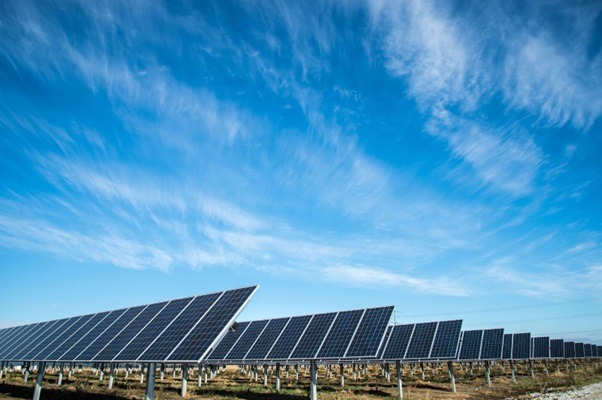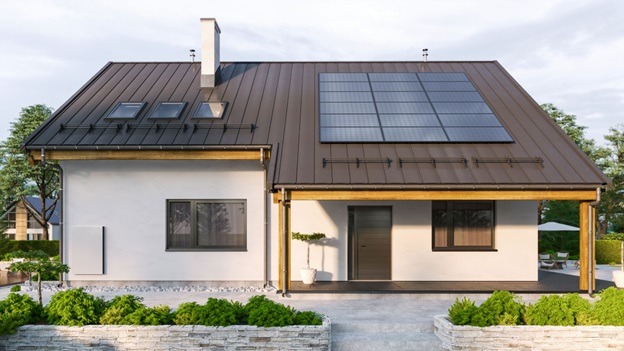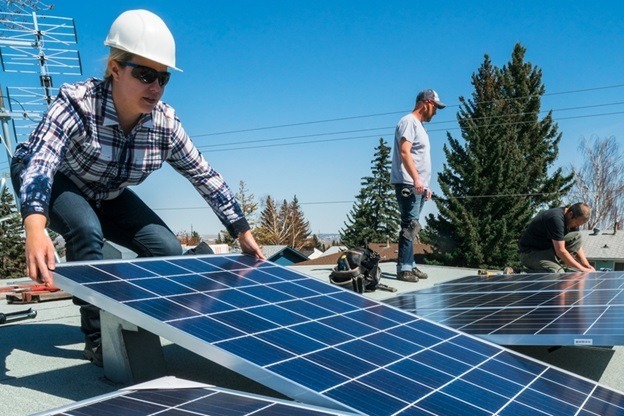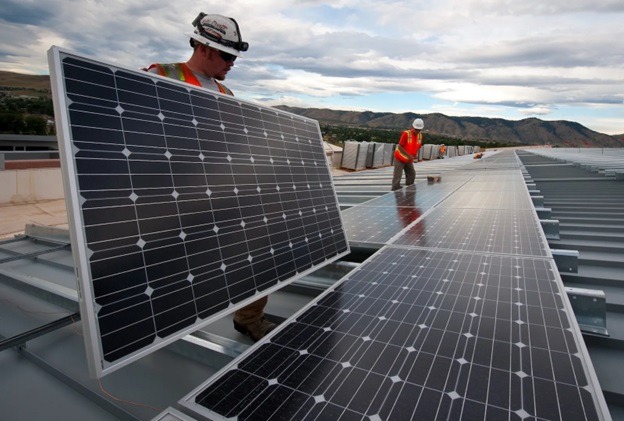According to Pew Research Center, 89% of Americans support the expansion of solar power to bring down the escalating electricity costs and safeguard the environment. But even with the increased use of solar power, sometimes the electricity generated is not enough to cater to a household’s needs.
This article focuses on solar panels for homes, batteries for solar systems, and the grid, explaining how these three work together to ensure homes enjoy reliable electricity.
The connection between your solar energy system and the electricity grid
Drawing enough solar panel electricity to ensure your home and household appliances remain powered up throughout can be challenging. Since completely going off-grid can be extremely expensive, connecting your system to the grid provides a surefire way to access electricity even when your solar panels are not operating optimally.
So, how does it work?
When photovoltaic panels tap solar energy from the sun, it is converted into AC electricity that powers our appliances, and sometimes, this energy is in excess. If you have a grid-tied system, the excess power will be sent to the grid.
In case the system doesn’t provide sufficient energy, the home can now access the electricity needed from the grid.
How solar energy helps the grid
Investing in solar energy is not only beneficial to you but also to utility companies. Ways that your solar-generated power can help the electricity grid include:
Solar power lowers the load on the grid
Since solar energy encourages self-consumption, it reduces the amount of electricity needed to be transmitted. This alone lowers the load on the grid, which can be particularly fruitful during peak hours when power is in demand.
Solar power flattens the electricity demand curve
Grid-tied solar systems send excess power to the grid that people who fully rely on utility companies can use. This flattens the electricity demand curve and especially during peak hours, minimizing the need for utility companies to pump electricity production to cater to the high energy demands.
Solar power helps to reduce the cost of network modernization and maintenance
Solar electricity is clean energy and replaces the use of fossil fuels that are harmful to the environment. Coupled with the fact that solar power generation for homes reduces the load on the grid, utility companies can enjoy a lower cost of network modernization and maintenance.
How solar energy and the grid cannot interact
As excited as many are about migrating to solar energy, several utility companies are not too ecstatic and make the switch more challenging. But why is that?
For starters:
- Utility companies are afraid that they will lose more revenues. Homes that take advantage of, for instance, net metering may send enough electricity to the grid, offsetting the electricity they tap from the grid. As a result, they do not incur electricity costs
- Utility companies frown upon initiatives such as tax incentives geared towards encouraging more households to go solar since they increase competition in a previously monopolized industry.
- A solar power system cannot guarantee a steady supply of electricity, especially during not-so-sunny days.
- Utility companies feel like solar owners use the grid for free when the need arises and should be liable for some of the grid’s maintenance costs.
How do solar panels and batteries work together?
A majority of homes with solar power cannot generate enough electricity to power appliances full-time. And while tapping from the grid is a solution, it is not the most cost-effective, which brings us to solar battery for home.
Home solar batteries are essential as they store excess energy generated by solar systems instead of sending it to the grid. Households can leverage the stored electricity at night or during such times when the systems cannot produce sufficient power.
Advantages and disadvantages of using batteries in solar panels
Batteries for a solar system have pros and cons that you should know about. They include:
Advantages
- Batteries store electricity that you can tap in case of a blackout. However, the duration at which the battery provides power depends on its storage capacity. The bigger the battery the longer it powers your home.
- With utility companies assigning tariff rates for different times of the day, homeowners can use their solar battery storage system to access stored electricity when tariff rates are at their highest.
- Using stored energy lowers the load on the grid.
- Since batteries allow you to access clean renewable energy, it significantly minimizes your carbon footprint, preserving the environment.
Disadvantages
- Solar batteries can be very expensive to buy and install and have a limited life span
- They also require high levels of maintenance. For instance, you need to always use distilled water in their cells, keep them charged and equalized, as well as routinely rotate them.
- Adding batteries to an already installed system can be complex and complicate the system’s operations
Bottom line
Solar panels, batteries, and the grid can work together to ensure more reliable and affordable electricity. Solar systems help utility companies by flattening the demand curve and reducing grid stress while the grid supports solar-powered homes when they cannot generate enough electricity.
On the other hand, batteries have proved essential as they allow homes using solar to store excess power and access electricity during emergency outages.
If you are looking to install solar panels or batteries and to take advantage of the grid’s net metering, look no further than PPM Solar. We will guide you through this worthwhile investment, ensuring your utility bills remain low.
Contact us today for a free estimate.





